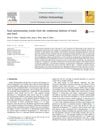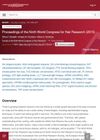Mice Engrafted with Human Fetal Thymic Tissue and Hematopoietic Stem Cells Develop Pathology Resembling Chronic Graft-Versus-Host Disease
June 2013
in “
Biology of blood and marrow transplantation
”
TLDR Mice with human fetal thymic tissue and stem cells developed symptoms similar to chronic graft-versus-host disease.
Researchers engrafted immunodeficient mice with human fetal thymic tissue and hematopoietic stem cells (HSCs), resulting in pathology resembling chronic graft-versus-host disease (cGVHD) observed in humans. The mice exhibited symptoms such as skin thickening, alopecia, lung inflammation, liver fibrosis, and eye irritation, typically developing more than 100 days post-transplantation. The study highlighted the critical role of the human thymic organoid in promoting T cell engraftment and cGVHD development, with regulatory T cells (FoxP3+ T cells) helping to limit disease severity. This humanized mouse model provided a valuable system for studying cGVHD and evaluating potential treatments.



